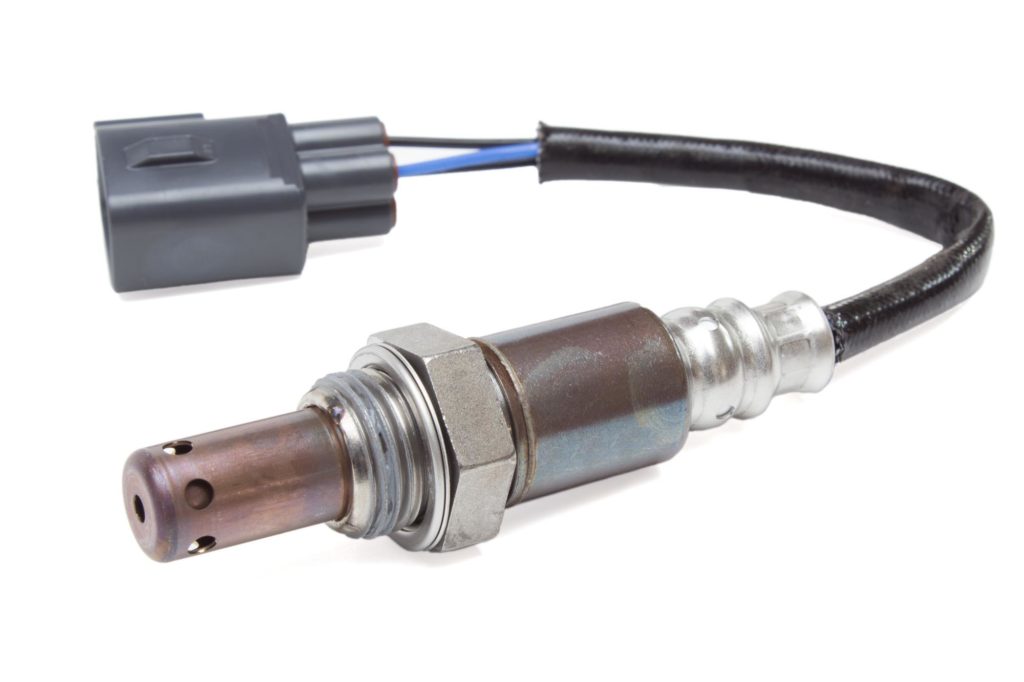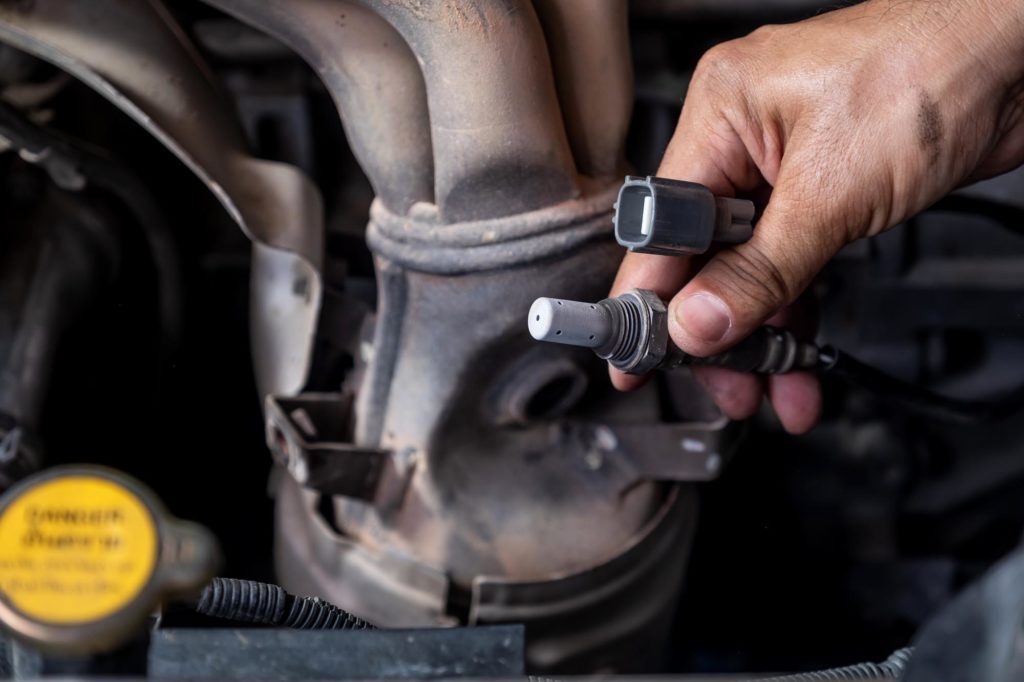Can You Drive Car With Bad O2 Sensor
Reading Time: 5 minutes
Modern cars have many different sensors onboard, including two or more oxygen sensors. The oxygen sensors are located in the vehicle's exhaust system, where they're often subject to contamination and high operating temperatures.
Because the sensors live such a tough life, it's not uncommon for them to fail prematurely, resulting in one or more noticeable symptoms.
What Does an O2 Sensor Do?
Oxygen (O2) sensors measure the amount of oxygen (or the concentration of combustibles) in the exhaust gases leaving the engine. O2 sensors were first introduced in production vehicles in the 1970s and became commonplace by the 1980s.

Modern vehicles have both an upstream and a downstream O2 sensor. Upstream O2 sensors are located before the catalytic converter, while downstream sensors are located after the converter.
The engine computer, which is often referred to as the powertrain control module (PCM), uses data from the upstream O2 sensor to regulate the engine's fuel mixture. Meanwhile, the PCM primarily uses the signal from the downstream O2 sensor to monitor the catalytic converter's health. In some cases, the PCM may also use the signal from the downstream sensor to tweak the fuel mixture.

Most older vehicles have O2 sensors with one or two wires. But late-model vehicles have four-wire oxygen sensors—two of the wires are for the sensor's signal circuit, and two are for the sensor's heater circuit. The PCM turns on the heater circuit when the vehicle is first started to quickly bring the sensor up to operating temperature.
There are two primary types of O2 sensors in use today: conventional zirconia and wide-band. A conventional O2 sensor can only react as a rich-lean indicator to an air-fuel mixture within a certain range. On the other hand, a wide-band O2 sensor can detect the exact mixture over a much wider range for more precise system monitoring.
Bad Oxygen Sensor Symptoms

You might be wondering: What are the symptoms of a bad O2 sensor? The following signs are common indicators that one of your car's O2 sensors is no longer doing its job.
Note: Many other problems can mimic a bad O2 sensor. You'll want to perform a thorough diagnosis before condemning the sensor itself.
Illuminated Check Engine Light

One of the most common signs of a bad O2 sensor is an illuminated check engine light. The PCM monitors the operation of the O2 sensors and their heater circuits. If the device detects a problem with any of the O2 sensors, it turns on the check engine light and stores a corresponding diagnostic trouble code (DTC) in its memory.
Engine Performance Problems

The PCM uses the signals from the O2 sensors when calculating the engine's air-fuel mixture. As such, a faulty O2 sensor can result in the PCM giving the engine the incorrect amount of fuel, causing issues, such as misfiring, rough running, and stalling.
Increased Fuel Consumption

An O2 sensor that is sluggish or has failed altogether can lead to an overly rich air-fuel mixture and increased fuel consumption. The unburned fuel can also cause the catalytic converter to overheat and fail.
How Many O2 Sensors are in a Car?

Exactly how many O2 sensors are in a car will depend on factors, such as the year, make, model, and engine size. Most late-model vehicles have at least two oxygen sensors—an upstream and a downstream—for each of the engine's cylinder banks. Engines with a 'V' or flat configuration have two cylinder banks, whereas engines with an inline or flat configuration have just one bank.
What Causes an Oxygen Sensor to Fail?

Sometimes, O2 sensors simply fail due to time and miles. In other cases, an O2 sensor may go bad due to contamination from substances, such as oil ash and coolant. Environmental factors (e.g., water and road salt) can also cause an O2 sensor to fail.
How Much Should it Cost to Replace an Oxygen Sensor?

If you choose to have a professional replace your car's oxygen sensor, you can usually expect to pay somewhere between $200 and $500 to get the job done. Of course, the exact cost will depend on various factors, such as the year, make, and model of your vehicle.
You can save money by replacing the oxygen sensor yourself if you have the tools and the know-how. CarParts.com has a wide variety of replacement oxygen sensors available for various makes and models.
Can I Replace an Oxygen Sensor Myself?

O2 sensor replacement is generally a fairly straightforward, DIY-friendly task. Because O2 sensors are located in the exhaust, they often succumb to rust and corrosion, making them difficult to break loose.
As such, it's a good idea to apply penetrating oil to the threaded portion of the O2 sensor before removal. Also, it's highly recommended that you consult a repair manual or repair database before attempting to replace the sensor.
How Long Can You Drive a Car with a Bad Oxygen Sensor?

If your car is suffering from a bad O2 sensor, you should address the issue as soon as possible. Depending on how the sensor fails, the issue can lead to additional problems, such as catalytic converter damage.
Should I Replace All My O2 Sensors at Once?
In most cases, it isn't necessary to replace all of your car's O2 sensors unless the sensors are contaminated. For example, if the engine has suffered from a failed head gasket, resulting in coolant entering the exhaust stream, all of the O2 sensors may require replacement due to contamination.
Any information provided on this Website is for informational purposes only and is not intended to replace consultation with a professional mechanic.
Can You Drive Car With Bad O2 Sensor
Source: https://www.carparts.com/blog/bad-o2-sensor-symptoms-causes-replacement-cost/
0 Response to "Can You Drive Car With Bad O2 Sensor"
Post a Comment